#but likely not the geometrid type
Explore tagged Tumblr posts
Text
@galacticnova3 submitted: Absolutely miniscule infant has places to be and plants to see (and eat) already!
I'll probably be finding and evicting/evacuating a lot more of these little fellas soon enough given all the moth eggs in Nougat's terrarium. Possibly left by this wonderful and wise-looking chumby lady.

TINY. Wow. Criminally small. Love that child and their possible thick mother.
#animals#insects#bugs#submission#video#moth#caterpillar#larva#inchworm#but likely not the geometrid type#if that is indeed the mother
278 notes
·
View notes
Photo
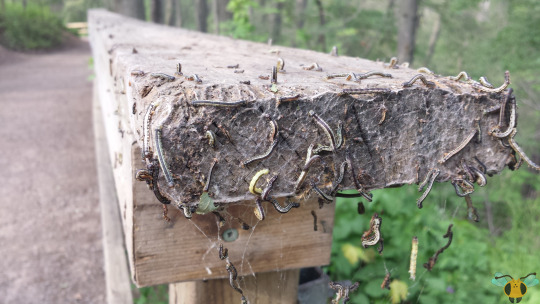
Fall Cankerworms - Alsophila pometaria
Do Inchworms like to party? Absolutely! Especially if they have other Inchworms around them, and there’s quite a few here! These are the partygoers that eat all the snacks without heed.
Truthfully speaking, these Caterpillars are in fact Inchworms as they belong to the family Geometridae, or Geometrid Moths. They move in a looping motion, pulling their body forward and creating an arch along their back as they do so. Then they straighten out and move forward again, inching their way to their destination. If you look closely, a few partygoers here are in the process of arching their way across this wooden observation fence. The adult Moths conversely are more known for the wave-like patterns that travel across their wings. We’ll return to the adults shortly; for now, let’s focus on the aggregation of Cankerworms in the forest. How they all wound up on the wooden fence is anyone’s guess, especially since it is devoid of leaves to defoliate. It’s possible they may have hatched on the fence itself, being placed their by a female Fall Cankerworm Moth thinking it was some type of hardwood tree. However, it’s more likely that these individuals are descending to pupate. You see, based on their appearance, they’ve been active for some time now. Upon hatching, Cankerworms begin their lives colored green, gradually darkening with each molt as they grow bigger, just as these have.
They may darken to black from instar to instar, but while they wriggle around they never lose the white bands that trail from head to toe. The band isn’t as visible when green, and neither are the Caterpillars for that matter. They use their green colors to their advantage by straightening their body and mimicking twigs if they feel a threat nearby as they feast at their tree. They’re well anchored thanks to their rear prolegs, so maintaining this posture isn’t an issue. After eating, defoliating, and molting, these Caterpillars find their way to the soil and pupate. The forest finds some peace in the meantime as the voraciousness of these Caterpillars has the potential to be devastating if left unchecked by their predators (both from birds and insects). As the seasons pass and autumn arrives, it is found they these Cankerworms don’t overwinter as pupae. The emerge as grey-colored Moths and seek out the best trees to place eggs and ready the next generation of Caterpillars for the winter. It may sound straightforward, but the female Cankerworms emerge without wings (my sentiments on that were covered in a Bagworm post), making location-seeking much more urgent! Next time you’re in a forested area where these wrigglers can be found, return in the autumn months and look for stout, grey, wide-bodied wingless Moths (grey-winged, male Moths may be nearby). It’s a strange sight, but it’s just another part of this insect’s journey. And being wingless does have some advantages: males come to you, less energy burned on flight and the potential of parthenogenesis (reported in some populations).
Picture was taken on June 10, 2017 at the Royal Botanical Gardens with a Samsung Galaxy S4.
#jonny’s insect catalogue#ontario insect#caterpillar#fall cankerworm#fall cankerworm moth#lepidoptera#moth#geometrid moth#insect#royal botanical gardens#june2017#2017#nature#entomology#invertebrates#arthropods#animals#photography
4 notes
·
View notes
Photo
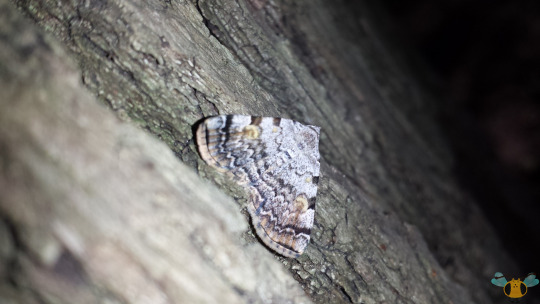
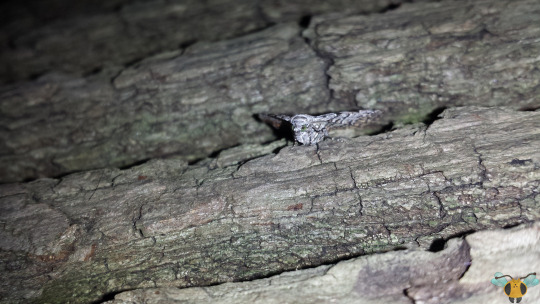
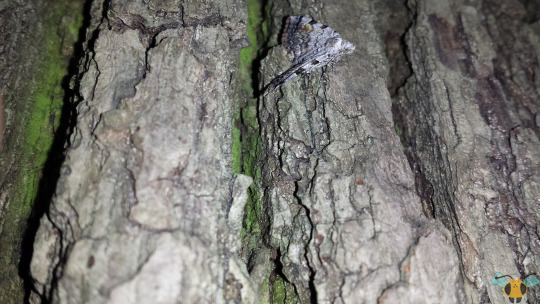
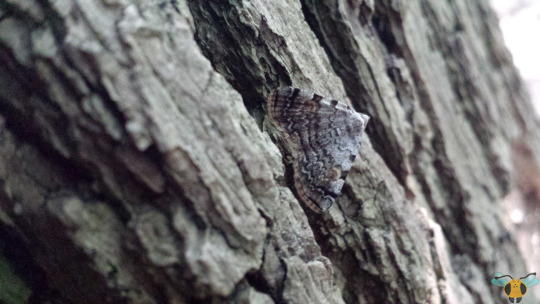
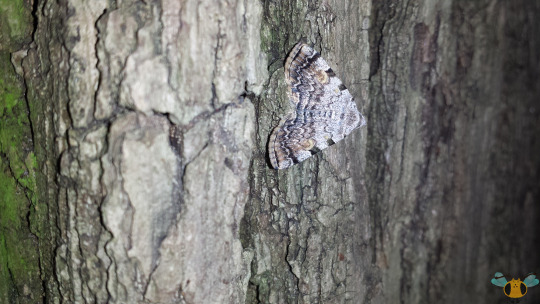
American Idia Moth - Idia americalis
Were it not for the camera flash, this mottled Moth would’ve been perfectly camouflaged against the bark of this tree, hidden in the shadows from the high branches. Other specimens can feature wing coloration that is more predominantly beige, white and brown, so perhaps they’d need to seek out other types of trees as hiding spots. Whatever colors they have, all the specimens I’ve cross-referenced with share similar thick triple-banding across the edge of the wings and a discoloration (similar to a spot) near the banding. Do note though that due to the similarity other Moths, the only way to truly be sure of this Moth’s specie is to examine the genitalia, and I don’t have the of time or equipment. I also wouldn’t want to harm this Moth and keep it in nature so it can enjoy its summer time among the managed wilderness. Ironically, I probably disturbed its resting as its was still mid-afternoon (towards the end of a High Park bug hunt), not close to night time when Moths like this one would normally become active.
When they become active, it’s reported that these insects gather near tree lichen, but I’m not sure that the adults eat it (I’ve read mixed findings, but will confirm in a future post). The Caterpillars definitely do however, and they also contribute to a healthy forest by eating debris such as dried leaves. Though called Litter Moths, they aren’t litter bugs at all it seems. Despite what the common name would suggest, there are many species of Idia Moth in North America beyond this one...but this one can only be found in North America. It has been dubbed the American Snout Moth as well, but that name may have fallen out of usage as it may cause confusion with the actual family of Snout Moths - Pyralidae. As mentioned earlier, the triple banding and blotches can distinguish this Moth from similarly patterned Geometrid Moths and other Idia relatives such as the look-a-like Common Idia Moth (Idia aemula)! That’s just one example, but there are quite a few Idia Moths that appear similar to this one at a first glance, so might be better to start by ruling out the Moths that don’t look like this one if you’ve collected a specimen to identify.
Pictures were taken on July 10, 2019 in High Park with a Samsung Galaxy S4.
#jonny’s insect catalogue#ontario insect#moth#american idia moth#lepidoptera#american idia#insect#high park#toronto#july2019#2019#owlet moth#litter moth#entomology#nature#invertebrates#arthropods#photography#animals
2 notes
·
View notes